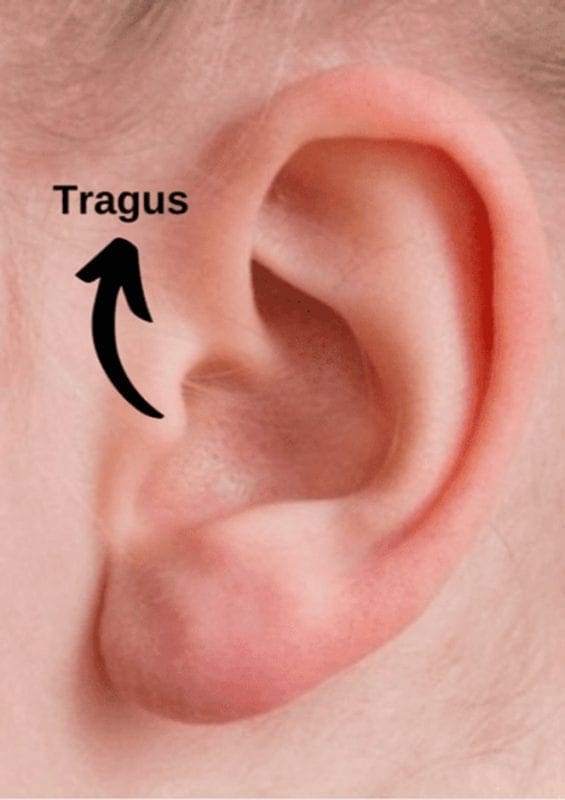
Acute otitis externa (Swimmer’s inflammation)
Anyone who has seen the anatomy of the ear in the chapter about otitis media can understand that this is a completely different process, occurring in a different population of children (or adults).
This is an inflammatory or infectious process that affects the external auditory canal (the same ear canal whose opening we can all see, which ends at the eardrum), but it does not involve the eardrum or the middle ear.
How does Acute Otitis Externa occur?
The external auditory canal is lined with epithelial cells, similar to any other external part of the body, including hair follicles and secretory glands. In this area, as elsewhere in the body, there is a normal flora consisting of bacteria and fungi that reside there regularly and maintain a delicate balance.
If for some reason this balance is disturbed — due to moisture (swimming pools, baths, excess humidity), dryness (lack of earwax or a dry canal), infections, or local trauma (especially following cleaning with cotton swabs or fingers) — an inflammatory or infectious process can begin in the canal. This infection does not involve the middle ear at all, only the auditory canal.
What are the clinical signs of Acute Otitis Externa?
The main complaint is usually pain, especially when touching the auricle area, particularly a part called the tragus (see photo). The pain is sometimes disproportionate. Even removing a child’s shirt or lightly touching the area can cause significant discomfort.
This infection typically occurs in older children, unlike acute otitis media which is more common in younger ones, although external ear infections can happen at any age.
This type of infection is usually not accompanied by fever. Some children may report hearing loss (due to a conduction issue).
Occasionally, a small amount of white-yellow discharge may be seen oozing from the ear canal.
What are the main features of physical examination in the case of Acute Otitis Externa?
The doctor will focus mainly on pain when touching the area called the tragus. Just a reminder – acute otitis media is not painful to touch in this area, so sensitivity and pain will guide the doctor toward the correct diagnosis.
Next, the doctor will examine the auditory canal (gently, as it may be a little painful) to assess canal involvement and rule out middle ear involvement. It’s important to check both ears, starting with the healthy one.
Emphasis should be placed on ruling out less common conditions such as purulent otitis media with secondary irritation of the auditory canal. Read more about purulent otitis media at the following link.
What is the treatment for Acute Otitis Externa?
In most cases, treatment is local, with drops containing the appropriate antibiotic (one that targets the bacteria causing Acute Otitis Externa), along with steroids to reduce local edema and inflammation. There’s no need to worry about short-term local treatment with steroids — they play an important role in rapid recovery. The drops commonly used for acute otitis externa go by several names. Drip a good amount of drops into the canal and keep the child lying on the side with the affected ear facing up for about three to five minutes. More details on how to apply ear drops to children or infants here.
In severe cases, you may seek advice from an ENT (Ear, Nose, and Throat) doctor who specializes in children. They can place a wick in the auditory canal, onto which local antibiotics are dripped.
Don’t forget pain relief with acetaminophen or ibuprofen as needed. Local treatment with ear drops for pain relief does not address the root cause but can help alleviate discomfort.
Improvement is usually seen in less than 24 hours.
If there is no improvement, or if the infection is accompanied by high fever, protrusion of the auricle, or if the child has an immunodeficiency, an early medical examination is advised.
Is Acute Otitis Externa a contagious disease and when can the child return to kindergarten?
Acute Otitis Externa is a non-contagious infection. The child can return to regular activities in their educational institution when they feel well, even if they are still being treated with antibiotic drops.
How can Acute Otitis Externa be avoided?
Children (or ears) who have already experienced Acute Otitis Externa are prone to recurrence, so the trigger that led to the first episode should be avoided.
For example, do not clean children’s ears with cotton swabs — it simply isn’t necessary. In families who are concerned about excessive earwax, only the outer ear area should be cleaned, without inserting any cleaning tool into the ear canal.
For swimming or bathing, earplugs can be used to prevent water from entering the ear canal. They may be clumsy, but they are effective. Another useful tip is to apply greasy ear drops (such as Phenazone and Amethocaine or something similar) into the ear before entering water.
For comments and questions, please register
